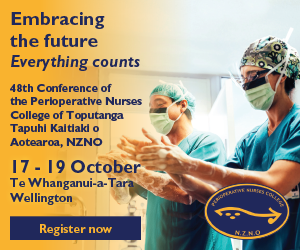The report, released last month, showed the nursing workforce grew by 2033, the biggest increase in the last five years.
But 4756 nurses were added to the register. Of these, more than half – 2724 – were internationally qualified registered nurses (IQNs), with 1822 New Zealand RN graduates joining the register. Enrolled nurses also boosted the register – 44 internationally qualified ENs and 166 New Zealand EN graduates.
Of the IQNs who joined the register, the majority (n=1108) were from the Philippines, followed by 923 from India, 266 from the United Kingdom, and 194 from Australia. Other source countries were the United States (53), South Africa (37), Canada (32), Ireland (29) and “other” 106. From October 2019, the council has outsourced the authentication and verification of registration documents for IQNs to an international organisation.
NZNO associate professional services manager Kate Weston said IQNs were a significant and valuable part of the workforce. “We expect to see a considerable drop in numbers joining the register in the coming 12 months because of the strict border restrictions. This is having an effect across the health sector, as demand for nurses grows and new workforces are needed to respond to COVID-19 .”
Within the total nursing workforce, 4541 or eight per cent identified as Māori, an increase from 4295 for the year ending March 31, 2019. The number of Māori new graduates was 250, compared to 237 in the previous year. Four per cent (n=2244) of the total workforce identify as Pacific, with 145 new graduates identifying as such, a drop of three on the previous year. Eighty-six nurse practitioners were endorsed in the year ending March 31, 2020, boosting the total number in practice to 459. Weston said it was pleasing to see a steady increase in the number of NPs.
Other key results from the latest annual report include:
- Twenty-five per cent (n=15,445) of the nursing workforce is involved in professional development and recognition programmes (PDRPs). Weston said this was a disappointing uptake “considering the majority of the nursing workforce is in DHBs, primary health or aged care, where PDRP programmes are available”.
- The council received 28 new notifications about the competence of nurses, representing 0.047 per cent of the total nursing workforce.
- Professional conduct committees (PCCs) investigated 23 complaints about nurses’ conduct. Four nurses had charges laid with the Health Practitioners Disciplinary Tribunal (HPDT); eight received a letter of counsel; two were referred for a health review; one had condition included on their scope of practice and in eight cases, no further action was taken.
- Twenty-seven nurses had court convictions considered by PCCs; of these, 14 were for drink driving, six were for a traffic violation, one was for an assault and six were for other offences. No further action was taken in six cases; six nurses received a letter of counsel, 11 were referred for health monitoring; and three had charges laid with the HPDT.
Five nurses were prosecuted before the HPDT; of these, two had their registration cancelled, two were suspended, censured and had conditions included in their scope of practice, and one charge was not proven.
Council chief executive Catherine Byrne said the delay in releasing the latest annual report was due to the general election, which delayed the report being tabled in Parliament. The new Minister of Health, Andrew Little, also had some questions about the report which had to be answered before the report could be published. “Hopefully this year’s report will be back to a more timely report.”
The council has not yet announced the three successful candidates (from a field of 31) in last year’s election of nurses to the council. Voting by the profession closed on September 4.
“We are still waiting for the minister to appoint to the elected positions. I understand we may not hear until mid-February,” Byrne said.



